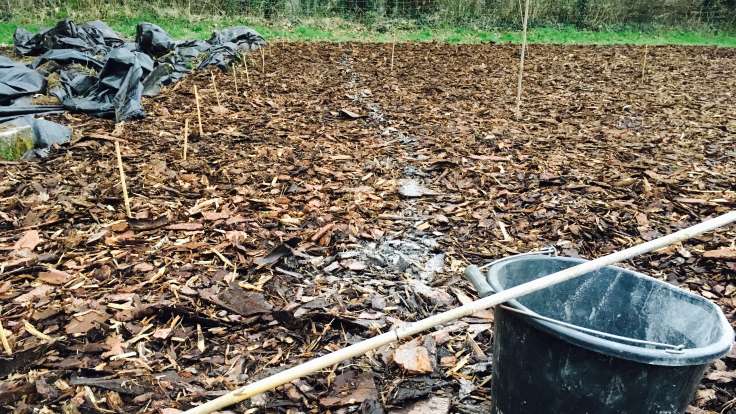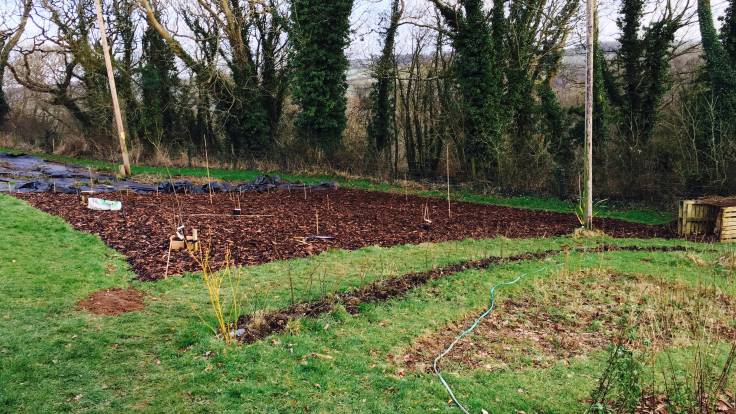
Using ground lime to mark the edge of an Aronia hedge
No matter how much administration there is in the world, I try to find some time to garden
Today was filled with filling in a tax return, the UK deadline looming only days away. I managed to get out into the forest garden for about 10 minutes, marking out a hedge with ground lime. Oh, sweet blesséd relief. Even 10 minutes away from the desk and the frantic tap-tapping, list checking and administrating was so worth it.
The Shrubbery (did I mention I have no head for creative names?) has had a layer of bark mulch diligently strewn upon its surface and I have started marking up the position of the shrubs. It’s a bit of a tricky situation, a big ash at the bottom of the south-facing slope, so some dry shade to watch out for. I’ll be planting Symphytum ibericum (Iberian dwarf comfrey) as a ground cover.

Marking out plant positions in The Shrubbery with bits of bamboo
Higher up, there’ll be some red and whitecurrants Ribes rubrum (‘Versailles’ and ‘Jonkheer Van Tets’), a couple of Chaenomeles japonica, a Zanthoxylum schinifolium and a Cephalotaxus Harringtonia. With a couple of lime trees and white mulberry as coppiced leaf crops at the top, there isn’t much space for anything elase
I have been using QCAD for my planning but it is obvious that the map is not the territory. The Ordnance Survey map is a few metres out, so I use it more as a guide and less as an instruction. Out in the field, I’m using bits of bamboo and a bucket of ground lime to mark out the circumference of the plants. Together with windbreaks, rabbit fencing, soil preparation and mulching, correct spacing is up there in the Top 5 List of Things To Consider.